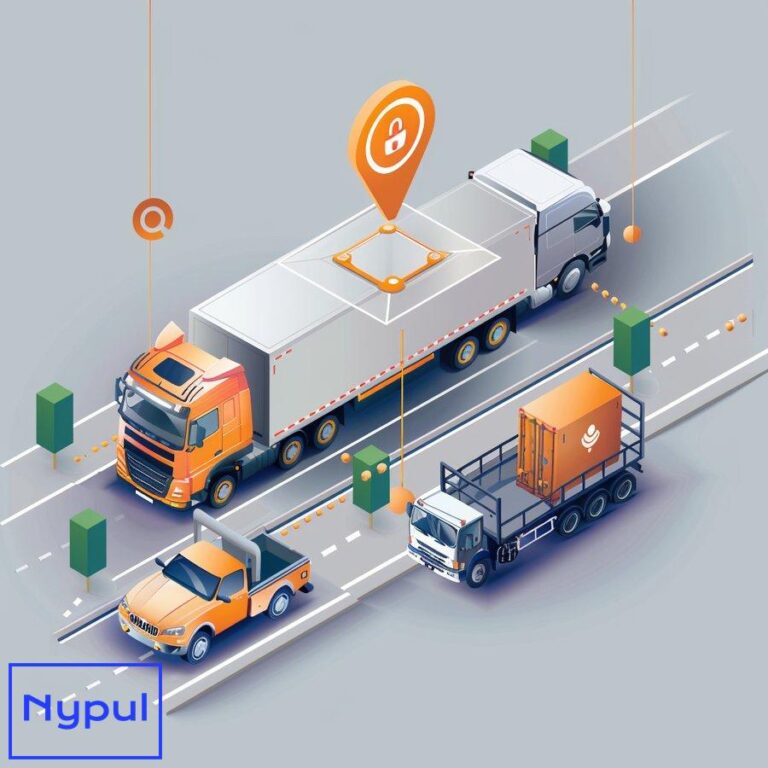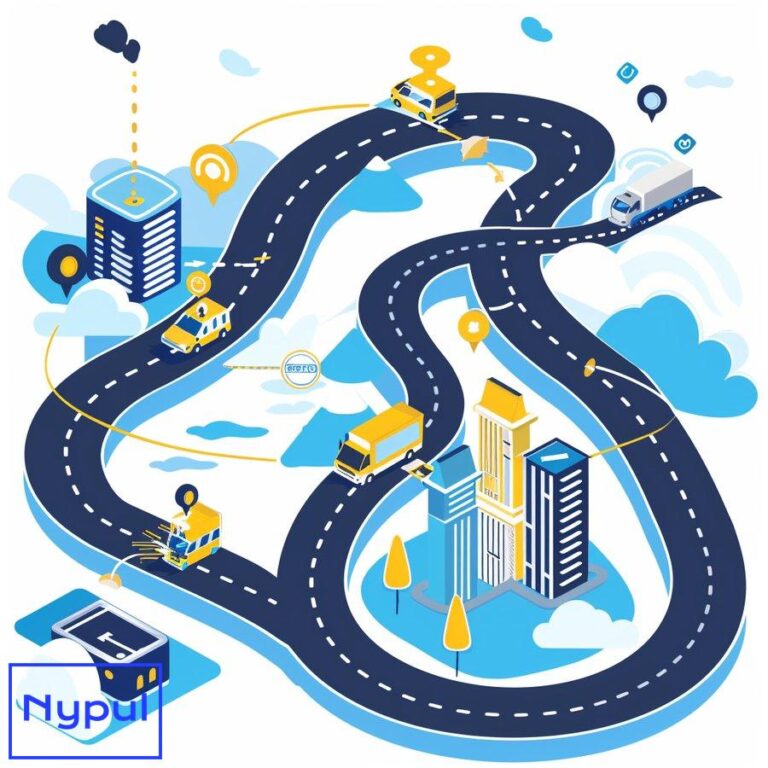What Is Gate Automation System
What is a gate automation system?
A gate automation system is a sophisticated technological solution designed to streamline and enhance the management of vehicle and cargo movements at logistics facilities, ports, and distribution centers. This system integrates hardware and software components to automate the processes involved in gate operations, significantly reducing manual intervention and improving overall efficiency.
At its core, a gate automation system comprises various elements working in harmony to facilitate seamless entry and exit of vehicles, containers, and goods. These elements typically include:
Automated Gates: The physical barriers that control access to the facility. These gates are equipped with sensors and actuators that allow them to open and close automatically based on predefined rules or signals from other system components.
Identification Technologies: Advanced systems for recognizing and verifying vehicles, drivers, and cargo. This may include license plate recognition cameras, RFID readers, biometric scanners, and barcode scanners.
Kiosks: Self-service terminals where drivers can input or verify information, receive instructions, and complete necessary documentation without human intervention.
Traffic Management Systems: Intelligent systems that direct vehicles to appropriate lanes or areas within the facility, optimizing traffic flow and reducing congestion.
Integration Platform: A central software system that coordinates all components, processes data, and interfaces with other logistics management systems such as Terminal Operating Systems (TOS) or Warehouse Management Systems (WMS).
Security Features: Surveillance cameras, access control systems, and other security measures to ensure only authorized personnel and vehicles enter the facility.
The primary objective of a gate automation system is to expedite the processing of trucks and cargo at entry and exit points while maintaining high levels of security and data accuracy. By automating traditionally manual tasks, these systems can significantly reduce wait times, minimize human errors, and provide real-time visibility into gate operations.
For instance, when a truck approaches a facility equipped with a gate automation system, the process might unfold as follows:
- The vehicle’s license plate is automatically scanned and recognized.
- The driver’s credentials are verified through biometric authentication or RFID card.
- The system checks the vehicle against scheduled appointments or manifests.
- If everything is in order, the gate opens automatically, allowing the truck to enter.
- The driver is directed to the appropriate area within the facility via digital signage or mobile app instructions.
- All transaction details are logged and synchronized with the facility’s management systems.
This automated process not only speeds up gate transactions but also enhances security by ensuring that only authorized vehicles and personnel gain access to the facility. Moreover, the digital nature of these systems allows for comprehensive data collection and analysis, enabling logistics managers to make data-driven decisions and continually improve operations.
Gate automation systems are particularly crucial in high-volume environments such as seaports, where efficient processing of containers and trucks is essential for maintaining competitiveness and meeting increasingly stringent environmental regulations. By reducing idle times and streamlining traffic flow, these systems can significantly contribute to reducing emissions and improving air quality around port areas.
The implementation of a gate automation system represents a significant step towards the concept of “smart ports” or “intelligent logistics hubs.” These advanced facilities leverage cutting-edge technologies to optimize all aspects of their operations, from gate management to cargo handling and storage. As such, gate automation is often seen as a foundational element in the broader digital transformation of the logistics and supply chain industry.
While the specific features and capabilities of gate automation systems can vary depending on the vendor and the particular needs of a facility, the overarching goal remains consistent: to create a more efficient, secure, and data-driven gate management process that can handle high volumes of traffic with minimal delays and errors.
What are the benefits of gate automation in logistics?
Gate automation systems offer a multitude of benefits that significantly enhance the efficiency, security, and overall performance of logistics operations. These advantages extend beyond the immediate gate area, positively impacting the entire supply chain ecosystem. Let’s explore the key benefits in detail:
Increased Operational Efficiency
Gate automation systems dramatically reduce the time required for processing vehicles and cargo at entry and exit points. This efficiency gain is achieved through:
Faster Processing Times: Automated systems can handle gate transactions in a fraction of the time required for manual processing. This speed is particularly crucial during peak hours when long queues can form at facility gates.
Reduced Manual Errors: By minimizing human intervention, gate automation systems significantly decrease the likelihood of errors in data entry, documentation, and vehicle routing. This accuracy ensures smoother operations and reduces the need for time-consuming corrections.
24/7 Operation Capability: Automated gates can function round the clock without the need for constant staffing, allowing for more flexible operating hours and improved utilization of facility resources.
Enhanced Security and Safety
Gate automation systems provide robust security features that protect facilities, assets, and personnel:
Access Control: Advanced identification technologies ensure that only authorized vehicles and individuals can enter the facility, significantly reducing the risk of unauthorized access or theft.
Digital Record Keeping: All gate transactions are logged digitally, creating a comprehensive audit trail that can be invaluable for security investigations and compliance purposes.
Reduced Human Exposure: By automating gate operations, these systems minimize the need for staff to be physically present in potentially hazardous areas, enhancing overall workplace safety.
Improved Data Collection and Analysis
The digital nature of gate automation systems facilitates extensive data gathering and analysis:
Real-Time Visibility: Managers can access up-to-the-minute information on gate activities, allowing for proactive decision-making and rapid response to any issues.
Performance Metrics: The system can automatically generate detailed reports on key performance indicators such as gate throughput, dwell times, and peak traffic periods. This data is crucial for continuous improvement initiatives.
Predictive Analytics: With sufficient historical data, advanced systems can employ machine learning algorithms to predict traffic patterns and optimize gate operations accordingly.
Cost Reduction
While the initial investment in a gate automation system can be substantial, it often leads to significant long-term cost savings:
Labor Cost Reduction: Automation reduces the need for manual gate staff, allowing for reallocation of human resources to more value-added tasks.
Operational Cost Savings: Faster processing times and reduced congestion lead to lower fuel consumption and decreased wear and tear on vehicles, benefiting both the facility operators and the trucking companies.
Penalty Avoidance: By ensuring timely processing and accurate documentation, automated systems help avoid costly delays and compliance-related penalties.
Environmental Benefits
Gate automation contributes to sustainability efforts in logistics:
Reduced Emissions: Faster processing times and improved traffic flow result in less idling time for trucks, significantly reducing exhaust emissions in and around the facility.
Paper Reduction: Digital documentation and e-gate passes eliminate the need for paper-based processes, contributing to environmental conservation efforts.
Improved Customer Satisfaction
The efficiencies gained through gate automation translate directly into improved service for logistics customers:
Shorter Wait Times: Truckers and cargo owners benefit from reduced queuing and faster turnaround times at the facility.
Transparency: Real-time tracking and notifications provide customers with up-to-date information on their shipments, enhancing overall service quality.
Flexibility: Automated systems can often accommodate last-minute changes or special requests more easily than manual processes, providing greater flexibility to customers.
Scalability and Future-Proofing
Gate automation systems are designed to handle growing volumes and adapt to changing technologies:
Capacity Expansion: Automated gates can typically handle higher traffic volumes than manual systems, allowing facilities to grow without proportional increases in gate staff.
Technology Integration: Modern gate automation platforms are often designed with open architectures that can easily integrate with emerging technologies such as blockchain, IoT sensors, and AI-driven analytics.
To illustrate the quantitative impact of gate automation, consider the following table comparing key metrics before and after implementation at a hypothetical logistics facility:
| Metric | Before Automation | After Automation | Improvement |
|---|---|---|---|
| Average Gate Transaction Time | 15 minutes | 3 minutes | 80% reduction |
| Daily Gate Throughput | 500 trucks | 1,200 trucks | 140% increase |
| Manual Data Entry Errors | 5% of transactions | 0.1% of transactions | 98% reduction |
| Staff Required for Gate Operations | 12 per shift | 3 per shift | 75% reduction |
| Annual Fuel Savings (Reduced Idling) | N/A | 50,000 gallons | Significant environmental impact |
| Customer Satisfaction Score | 72% | 94% | 22 percentage point increase |
These benefits collectively contribute to creating a more efficient, secure, and competitive logistics operation. As the logistics industry continues to face pressures for faster, more reliable, and more transparent services, gate automation systems have become an essential tool for facilities aiming to meet these demands while maintaining operational excellence.
What key features should a gate automation system have?
A robust gate automation system should encompass a range of features that collectively enhance efficiency, security, and data management in logistics operations. The key features can be categorized into several critical areas, each contributing to the overall effectiveness of the system. Let’s explore these essential features in detail:
Identification and Authentication
License Plate Recognition (LPR): High-resolution cameras coupled with optical character recognition (OCR) software to automatically capture and verify vehicle license plates.
RFID Technology: Radio-frequency identification tags and readers for quick, contactless identification of vehicles and drivers.
Biometric Authentication: Advanced systems may include fingerprint scanners, facial recognition, or iris scanning for enhanced security and driver verification.
Barcode and QR Code Scanning: For reading appointment codes, container numbers, or other relevant documentation.
Traffic Management
Lane Assignment: Intelligent routing of vehicles to appropriate lanes based on cargo type, appointment status, or facility area destination.
Dynamic Lane Control: The ability to open or close lanes automatically based on traffic volume and patterns.
Weigh-in-Motion Systems: Integrated weighbridges that can measure vehicle weight without requiring the truck to stop, enhancing flow efficiency.
Traffic Light Integration: Synchronized traffic signals to manage vehicle flow within the facility.
User Interface and Communication
Self-Service Kiosks: Interactive terminals where drivers can input or verify information, receive instructions, and complete necessary documentation.
Multilingual Support: Interface and documentation available in multiple languages to accommodate a diverse driver population.
Mobile App Integration: Companion applications for drivers and operators to access information and receive real-time updates.
Digital Signage: Clear, dynamic displays providing directions, wait times, and other relevant information to drivers.
Data Management and Integration
Real-Time Data Processing: Immediate handling and analysis of gate transactions for up-to-the-minute operational insights.
API Integration: Robust application programming interfaces to connect with other logistics systems such as Terminal Operating Systems (TOS), Warehouse Management Systems (WMS), or broader Port Community Systems (PCS).
Data Encryption and Security: Strong cybersecurity measures to protect sensitive information and prevent unauthorized access.
Automated Reporting: Generation of customizable reports on key performance indicators, traffic patterns, and system utilization.
Security Features
Access Control Integration: Seamless connection with facility-wide access control systems to manage personnel and vehicle permissions.
Video Surveillance: High-definition cameras for monitoring gate areas and recording all transactions for security and audit purposes.
Automated Barrier Control: Gates and barriers that open and close automatically based on successful authentication and authorization.
Incident Detection: AI-powered systems capable of identifying and alerting operators to unusual activities or security breaches.
Operational Efficiency
Appointment Scheduling System: Integration with or inclusion of a system for managing truck appointments to balance gate traffic throughout the day.
Exception Handling: Automated processes for dealing with common exceptions (e.g., mismatched information, overweight vehicles) with minimal human intervention.
Yard Management Integration: Connection with yard management systems to optimize container or trailer positioning and retrieval.
Scalability and Flexibility
Modular Design: The ability to add or modify features as operational needs evolve.
Cloud-Based Architecture: Leveraging cloud computing for enhanced scalability, accessibility, and disaster recovery capabilities.
Support for Multiple Gate Types: Ability to manage various gate scenarios including main gates, intermodal facilities, and internal checkpoints.
Environmental and Compliance Features
Emissions Monitoring: Integration with air quality sensors to track and report on environmental impact.
Compliance Tracking: Automated checks against regulatory requirements and generation of necessary compliance reports.
Green Lane Prioritization: Features to expedite processing of low-emission or electric vehicles as part of sustainability initiatives.
To illustrate how these features contribute to system performance, consider the following table comparing basic and advanced gate automation systems:
| Feature Category | Basic System | Advanced System |
|---|---|---|
| Identification Methods | LPR, RFID | LPR, RFID, Biometrics, QR Codes |
| Traffic Management | Static Lane Assignment | Dynamic Lane Control, Weigh-in-Motion |
| User Interface | Basic Kiosks | Multilingual Kiosks, Mobile Apps, Digital Signage |
| Data Integration | Limited API Support | Full TOS/WMS/PCS Integration |
| Security Features | Basic Access Control | AI-Powered Surveillance, Incident Detection |
| Operational Efficiency | Basic Appointment System | Advanced Exception Handling, Yard Management Integration |
| Scalability | On-Premise Solution | Cloud-Based, Modular Architecture |
| Environmental Features | None | Emissions Monitoring, Green Lane Prioritization |
The specific combination of features required will depend on the unique needs of each facility, the volume of traffic handled, and the types of cargo processed. However, a comprehensive gate automation system should strive to incorporate as many of these key features as possible to maximize efficiency, security, and adaptability in the face of evolving logistics challenges.
When selecting or designing a gate automation system, logistics facility managers should carefully evaluate their current and future needs, considering factors such as traffic volume, security requirements, environmental regulations, and integration with existing systems. The goal is to implement a solution that not only addresses immediate operational challenges but also provides a flexible foundation for future growth and technological advancements in the logistics industry.
What types of technologies are used in gate automation?
Gate automation systems leverage a diverse array of technologies to achieve their objectives of enhancing efficiency, security, and data management in logistics operations. These technologies span from hardware components to sophisticated software solutions, often integrating cutting-edge innovations from various fields. Let’s explore the key technologies employed in modern gate automation systems:
Identification and Authentication Technologies
Optical Character Recognition (OCR): This technology forms the backbone of License Plate Recognition (LPR) systems. Advanced OCR algorithms can quickly and accurately read license plates, container numbers, and other alphanumeric identifiers, even in challenging lighting conditions or when plates are partially obscured.
Radio-Frequency Identification (RFID): RFID technology uses electromagnetic fields to automatically identify and track tags attached to objects. In gate automation, RFID is commonly used for vehicle and driver identification, allowing for quick, contactless verification.
Biometric Systems: These include:
– Fingerprint Scanners: For unique driver identification.
– Facial Recognition: Uses AI algorithms to match facial features against a database.
– Iris Scanning: Provides highly secure identification based on unique eye patterns.
Near-Field Communication (NFC): Similar to RFID but with shorter range, NFC can be used for secure, close-proximity identification, often integrated with mobile devices.
Barcode and QR Code Technology: 2D and 3D scanners capable of reading various types of barcodes and QR codes on documents, mobile devices, or cargo labels.
Imaging and Sensor Technologies
High-Resolution Cameras: Used for license plate recognition, container number reading, and general surveillance. These often include features like low-light capability and wide dynamic range to operate effectively in various environmental conditions.
Infrared Sensors: Enable night vision capabilities for 24/7 operation and can also be used for detecting vehicle presence.
Laser Scanners: Employed in some systems for precise measurement of vehicle dimensions or for creating 3D profiles of trucks and cargo.
Weight Sensors: Integrated into weighbridges for accurate vehicle weight measurement, often with weigh-in-motion capabilities to reduce processing time.
Communication Technologies
Wi-Fi and Cellular Networks: Provide connectivity for mobile devices, kiosks, and various system components throughout the facility.
Bluetooth Low Energy (BLE): Used for short-range communication, often in conjunction with mobile apps for driver interactions.
Voice over IP (VoIP): Enables clear audio communication between drivers and remote operators when necessary.
Data Processing and Management Technologies
Edge Computing: Allows for rapid processing of data at or near the source of data generation, reducing latency and bandwidth use.
Cloud Computing: Provides scalable, flexible infrastructure for data storage, processing, and application hosting.
Big Data Analytics: Utilizes large datasets to derive insights, predict trends, and optimize operations.
Artificial Intelligence and Machine Learning: Employed in various aspects of gate automation, including:
– Predictive maintenance of gate equipment
– Anomaly detection in traffic patterns or security breaches
– Optimization of lane assignments and traffic flow
Blockchain: Some advanced systems are beginning to incorporate blockchain technology for secure, transparent record-keeping of transactions and cargo movements.
User Interface Technologies
Touchscreen Displays: Used in self-service kiosks and operator workstations for intuitive interaction.
Voice Recognition: Enables hands-free operation and can be particularly useful forUser Interface Technologies (continued)
Voice Recognition: Enables hands-free operation and can be particularly useful for drivers who need to interact with the system while remaining focused on their surroundings. This feature enhances usability and safety, particularly in busy environments.
Mobile Applications: Companion apps allow drivers and logistics personnel to access real-time information, receive notifications, and manage appointments directly from their smartphones. These apps often include features such as GPS navigation to guide drivers to the correct gate or parking area.
Integration Technologies
Application Programming Interfaces (APIs): APIs facilitate seamless communication between the gate automation system and other logistics management systems, such as Terminal Operating Systems (TOS) or Warehouse Management Systems (WMS). This integration is crucial for ensuring data consistency and operational efficiency.
Middleware Solutions: These software solutions act as intermediaries that connect different applications and systems, allowing them to communicate effectively. Middleware can help streamline data flow between the gate automation system and existing enterprise resource planning (ERP) systems.
Cloud-Based Platforms: Many modern gate automation systems utilize cloud technology to provide scalability, accessibility, and enhanced data storage capabilities. Cloud platforms allow for easier updates and integration with other cloud-based logistics solutions.
Security Technologies
Encryption Protocols: Strong encryption methods protect sensitive data transmitted between devices, ensuring that unauthorized parties cannot intercept or manipulate information.
Intrusion Detection Systems (IDS): These systems monitor network traffic for suspicious activities or policy violations, providing alerts in real-time to prevent potential security breaches.
Surveillance Systems: Integrated video surveillance systems enhance security by monitoring gate areas continuously. Advanced analytics can identify unusual behaviors or incidents, triggering alerts for immediate investigation.
To summarize the various technologies utilized in gate automation systems, the following table highlights key technologies along with their primary functions:
| Technology Type | Primary Function |
|---|---|
| Optical Character Recognition (OCR) | License plate and container number reading |
| Radio-Frequency Identification (RFID) | Contactless identification of vehicles and drivers |
| Biometric Systems | Secure identification through fingerprints, facial recognition, or iris scanning |
| High-Resolution Cameras | Surveillance and license plate recognition |
| Weigh-in-Motion Sensors | Real-time vehicle weight measurement without stopping |
| Edge Computing | Localized data processing for reduced latency |
| Cloud Computing | Scalable infrastructure for data storage and application hosting |
| Artificial Intelligence | Predictive analytics and optimization of operations |
| APIs | Integration with other logistics management systems |
| Encryption Protocols | Data protection during transmission |
The combination of these technologies creates a comprehensive gate automation system capable of enhancing operational efficiency, improving security, and providing valuable insights through data analysis. As logistics facilities continue to evolve in response to growing demands for speed, accuracy, and transparency, the adoption of advanced gate automation technologies will play a pivotal role in achieving these objectives.
How is a gate automation system implemented?
Implementing a gate automation system involves a series of strategic steps that ensure successful integration into existing operations while maximizing efficiency and security. Each phase of the implementation process requires careful planning, collaboration among stakeholders, and ongoing evaluation. The following outlines the key stages involved in implementing a gate automation system:
Needs Assessment
Before any technical decisions are made, it is essential to conduct a thorough needs assessment:
-
Identify Objectives: Determine what specific problems the automation system aims to solve. This may include reducing wait times, improving security measures, or enhancing data accuracy.
-
Evaluate Current Processes: Analyze existing gate operations to identify inefficiencies or bottlenecks that could be addressed through automation.
-
Stakeholder Input: Engage with key stakeholders such as facility managers, security personnel, IT staff, and drivers to gather insights on their needs and expectations from the new system.
System Design
Once objectives are established, the next step is designing a tailored solution:
-
Select Key Features: Based on the needs assessment, determine which features are essential for the system—such as license plate recognition, RFID capabilities, or biometric authentication.
-
Choose Technology Stack: Decide on the hardware components (e.g., cameras, sensors) and software platforms (e.g., cloud-based solutions) that will best meet operational requirements.
-
Create System Architecture: Develop an architecture plan that outlines how various components will interact with each other and integrate with existing logistics management systems.
Vendor Selection
Choosing the right vendor is critical for successful implementation:
-
Research Potential Vendors: Look for vendors that specialize in gate automation solutions with proven track records in similar environments.
-
Request Proposals: Solicit proposals from multiple vendors detailing their solutions’ capabilities, costs, support services, and implementation timelines.
-
Conduct Demos/Trials: Evaluate vendor offerings through demonstrations or pilot programs to assess functionality and user experience.
-
Check References: Reach out to other clients who have implemented similar systems to gain insights into vendor reliability and support quality.
Installation
With a vendor selected and agreements finalized, installation can begin:
-
Site Preparation: Ensure that the installation site is ready by addressing any necessary infrastructure modifications (e.g., power supply or network connectivity).
-
Equipment Installation: Install physical components such as gates, cameras, kiosks, sensors, and any related hardware according to the design specifications.
-
Software Setup: Configure software applications on servers or cloud platforms while ensuring proper integration with existing systems through APIs or middleware solutions.
-
Testing Phase: Conduct thorough testing of all components to ensure they function correctly both individually and as part of the overall system. This includes stress testing under peak traffic conditions.
Training
Training staff on how to use the new system is essential for successful adoption:
-
User Training Sessions: Organize training sessions for all users—gate staff, security personnel, IT teams—focusing on how to operate kiosks, manage data entry processes, respond to alerts, etc.
-
Documentation Provisioning: Provide user manuals and quick reference guides that outline standard operating procedures for using the new system effectively.
-
Ongoing Support Resources: Ensure that users know where to find help if they encounter issues after implementation—whether through internal IT support or vendor-provided resources.
Go-Live
After comprehensive testing and training are completed:
-
Launch the System: Officially switch from manual operations to automated processes at the designated go-live date.
-
Monitor Performance Closely: During initial operation phases post-launch, closely monitor performance metrics such as transaction times and error rates. Be prepared to make adjustments based on real-world feedback.
-
Gather User Feedback: Encourage users to provide feedback on their experiences with the new system so any necessary improvements can be identified quickly.
What challenges may arise during gate automation adoption?
While implementing a gate automation system offers numerous benefits for logistics operations, several challenges may arise during adoption. Understanding these potential hurdles allows organizations to proactively address them throughout the implementation process. Here are some common challenges associated with adopting a gate automation system:
Resistance to Change
Employees accustomed to traditional manual processes may resist transitioning to automated systems:
-
Cultural Barriers: Staff may feel apprehensive about new technologies replacing their roles or altering established workflows.
-
Communication Gaps: Insufficient communication regarding the benefits of automation can lead to misunderstandings about its purpose and value.
To mitigate resistance:
-
Involve employees early in discussions about changes.
-
Highlight how automation can enhance their roles rather than replace them by freeing them from mundane tasks so they can focus on higher-value activities.
Technical Integration Issues
Integrating new automation technology with existing logistics management systems can be complex:
-
Compatibility Challenges: Legacy systems may not easily interface with modern automation solutions due to differing architectures or outdated protocols.
-
Data Migration Difficulties: Transferring historical data from old systems into new ones can lead to inconsistencies if not managed carefully.
To overcome integration issues:
-
Conduct thorough compatibility assessments before selecting an automation solution.
-
Develop a detailed data migration plan that includes validation steps to ensure accuracy post-migration.
Budget Constraints
The initial investment required for implementing a gate automation system can be substantial:
-
High Upfront Costs: Expenses associated with hardware installation, software licensing fees, training programs, and ongoing maintenance can strain budgets.
-
Unforeseen Costs During Implementation: Additional expenses may arise due to unexpected complications during installation or integration phases.
To manage budget constraints:
-
Create a comprehensive budget plan that accounts for all potential costs throughout each phase of implementation.
-
Explore financing options available through vendors or third-party financing institutions dedicated specifically for technology upgrades in logistics operations.
Security Concerns
Introducing automated systems raises cybersecurity concerns that must be addressed:
-
Data Breaches Risk: Increased connectivity between devices creates more opportunities for unauthorized access if proper safeguards aren’t implemented.
-
Physical Security Vulnerabilities: Automated gates still require robust physical security measures; otherwise they may become targets for tampering or vandalism.
To enhance security:
-
Implement strong encryption protocols for data transmission.
-
Regularly update software applications with security patches provided by vendors.
-
Conduct routine audits of both digital infrastructure (network vulnerability assessments) as well as physical security measures around gates themselves (surveillance camera placements).
Maintenance Challenges
Ongoing maintenance is crucial but can also present challenges:
-
Resource Allocation Issues: Facilities may struggle with dedicating adequate resources—both human capital & budgetary funds—for regular maintenance tasks.
-
Vendor Support Limitations: Some organizations find themselves reliant on vendor support but experience delays when issues arise due lack of timely responses from service providers.
To address maintenance challenges:
-
Establish clear maintenance schedules detailing routine checks & servicing requirements based on manufacturer recommendations.
-
Develop relationships with multiple vendors where possible so there are alternative support channels available if needed during critical times when issues arise unexpectedly.
What are some real-world examples of successful gate automation?
Numerous organizations across various sectors have successfully implemented gate automation systems that significantly improved their operational efficiency while enhancing security measures. Here are some notable examples illustrating successful implementations:
Port of Rotterdam
The Port of Rotterdam is one of Europe’s largest ports known for its advanced logistics operations. The port adopted an integrated gate automation solution featuring license plate recognition technology combined with RFID identification systems.
Key outcomes included:
- Reduction in average truck processing time from 20 minutes down to just 5 minutes.
- Improved throughput capacity allowing more than 1 million trucks processed annually without additional staffing costs.
- Enhanced security measures through automated access control preventing unauthorized entry into sensitive areas within port facilities.
Amazon Fulfillment Centers
Amazon has integrated sophisticated gate automation at its fulfillment centers worldwide. Their approach includes self-service kiosks equipped with biometric authentication alongside mobile app interfaces allowing drivers real-time updates about their delivery status upon arrival at gates.
Results achieved include:
- Streamlined entry processes leading up-to 30% faster vehicle turnaround times compared traditional methods.
- Enhanced tracking capabilities enabling better visibility into delivery schedules which ultimately increased customer satisfaction ratings by 15%.
- Improved labor allocation since fewer staff members were needed onsite resulting in significant cost savings over time.
Maersk Line
Maersk Line implemented an advanced automated gate system at several container terminals globally using state-of-the-art video surveillance combined with automated barrier controls.
Achievements included:
- Decreased dwell times significantly by automating customs clearance processes integrated directly within terminal operations.
- Increased cargo handling efficiency allowing vessels turnaround times reduced by up-to 40%.
- Enhanced compliance tracking capabilities leading toward improved regulatory adherence across multiple jurisdictions.
Walmart Distribution Centers
Walmart has adopted an innovative approach towards automating its distribution center gates utilizing RFID technology alongside real-time traffic management tools integrated into their supply chain management platform.
Highlights include:
- Improved inventory accuracy resulting from automated tracking processes reducing stock discrepancies by nearly 25%.
- Enhanced operational visibility enabling better forecasting & planning capabilities leading toward optimized resource allocation across facilities nationwide.
- Significant reduction in transportation costs achieved through improved routing efficiencies driven by accurate data insights generated via automated systems.
These examples demonstrate how organizations across diverse sectors have successfully leveraged gate automation technologies not only improve operational efficiencies but also enhance overall security measures while achieving substantial cost savings over time. As logistics continues evolving rapidly due technological advancements & increasing demands from customers seeking faster deliveries—gate automation remains pivotal component driving success within modern supply chains today!
By understanding these real-world implementations’ successes—and learning lessons drawn from them—other organizations looking towards adopting similar solutions can better navigate challenges ahead while maximizing benefits derived from investing into cutting-edge technologies designed specifically enhance productivity within logistics operations!





